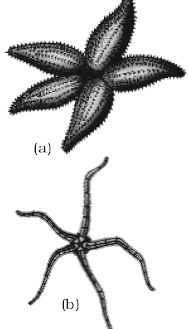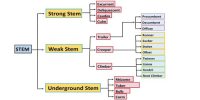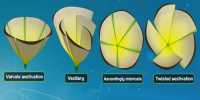Phylum Echinodermata animals have an endoskeleton of calcareous ossifies and hence, the name Echinodermata (Spiny bodied, Figure). All are marine with organ-system level of organization. The adult echinoderms are radically symmetrical but larvae are bilaterally symmetrical. They are triploblastic and coelomate animals.

Fig: Asterias and Ophiura
Digestive system is complete with mouth on the lower (ventral) side and anus on the upper (dorsal) side. The most distinctive feature of echinoderms is the presence of water vascular system which helps in locomotion, capture and transport of food and respiration. An excretory system is absent. Sexes are separate. Reproduction is sexual. Fertilization is usually external. Development is indirect with free-swimming larva.
Examples: Asterias (Starfish), Echinus (Sea urchin), Antedon (Sea lily), Cucumaria (Sea cucumber) and Ophiura (Brittle star).













